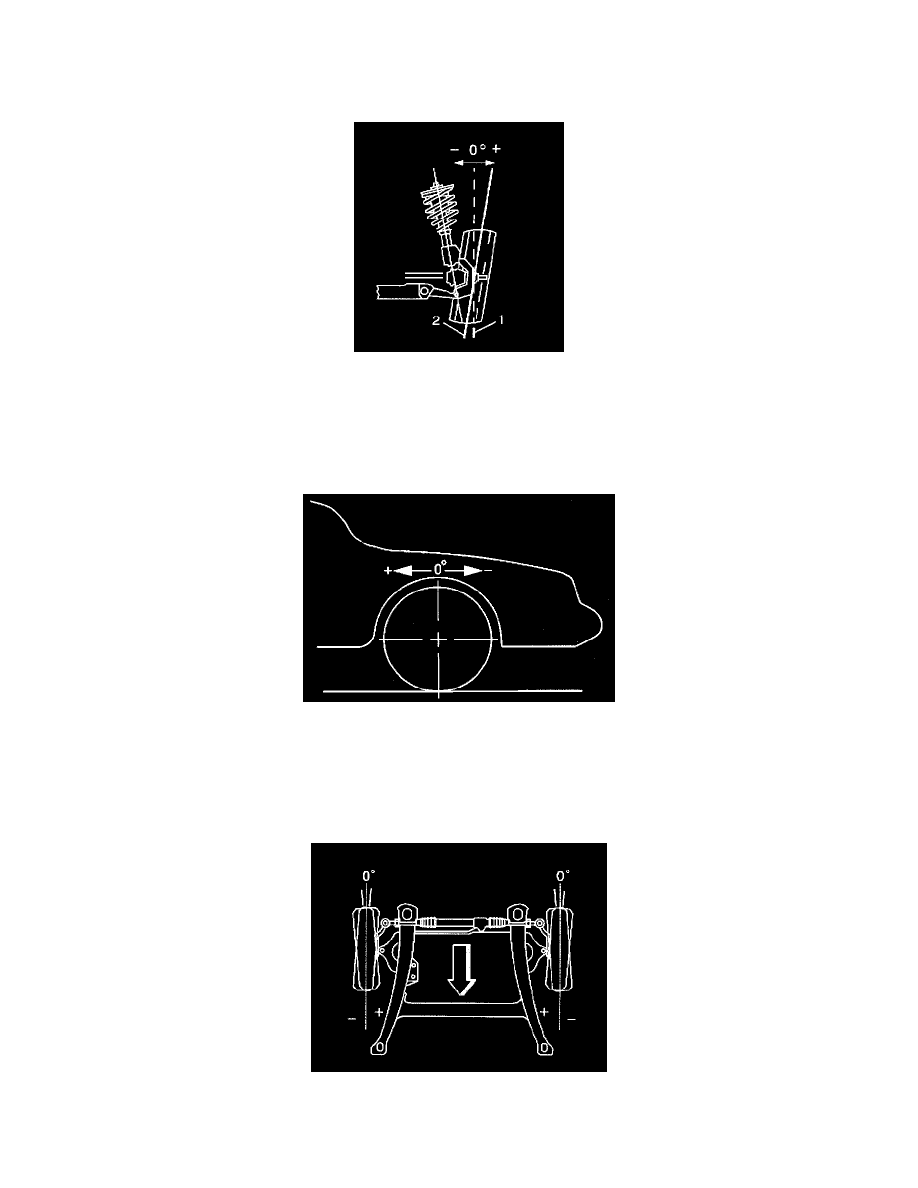Lumina V6-3.1L VIN J (2000)

Alignment: Description and Operation
Camber Description
Camber is the tilting of the wheels from the vertical when viewing from the front of the vehicle. When the wheels tilt outward at the top, the camber is
positive (+). When the wheels tilt inward, the camber is negative (-). The amount of tilt measured in degrees from the vertical is the camber angle.
Camber influences both directional control and tire wear. Excessive camber results in tire wear. Excessive camber causes the vehicle to pull or lead to
the side with the most positive camber. Camber adjustment is available at both the front and the rear wheels.
Caster Description
Caster is the tilting of the uppermost point of the steering axis either forward or backward from the vertical (viewing from the side of the vehicle). A
backward tilt (at the top) is positive (+). A forward tilt (at the top) is negative (-). Caster influences the directional control of the steering. Caster does
not affect the tire wear. If one wheel has a more positive caster than the other, this condition will cause the vehicle to move or lead toward the side
with the least amount of positive caster.
Toe Description
Toe-in is the turning in of the wheels from the geometric centerline/thrust line. Toe-out is the turning out of the wheels from the geometric
centerline/thrust line. The purpose of toe is to ensure the parallel rolling of the wheels.
Also, toe serves to offset the small deflections of the wheel support system which occur when the vehicle is rolling forward. Even when the wheels are
